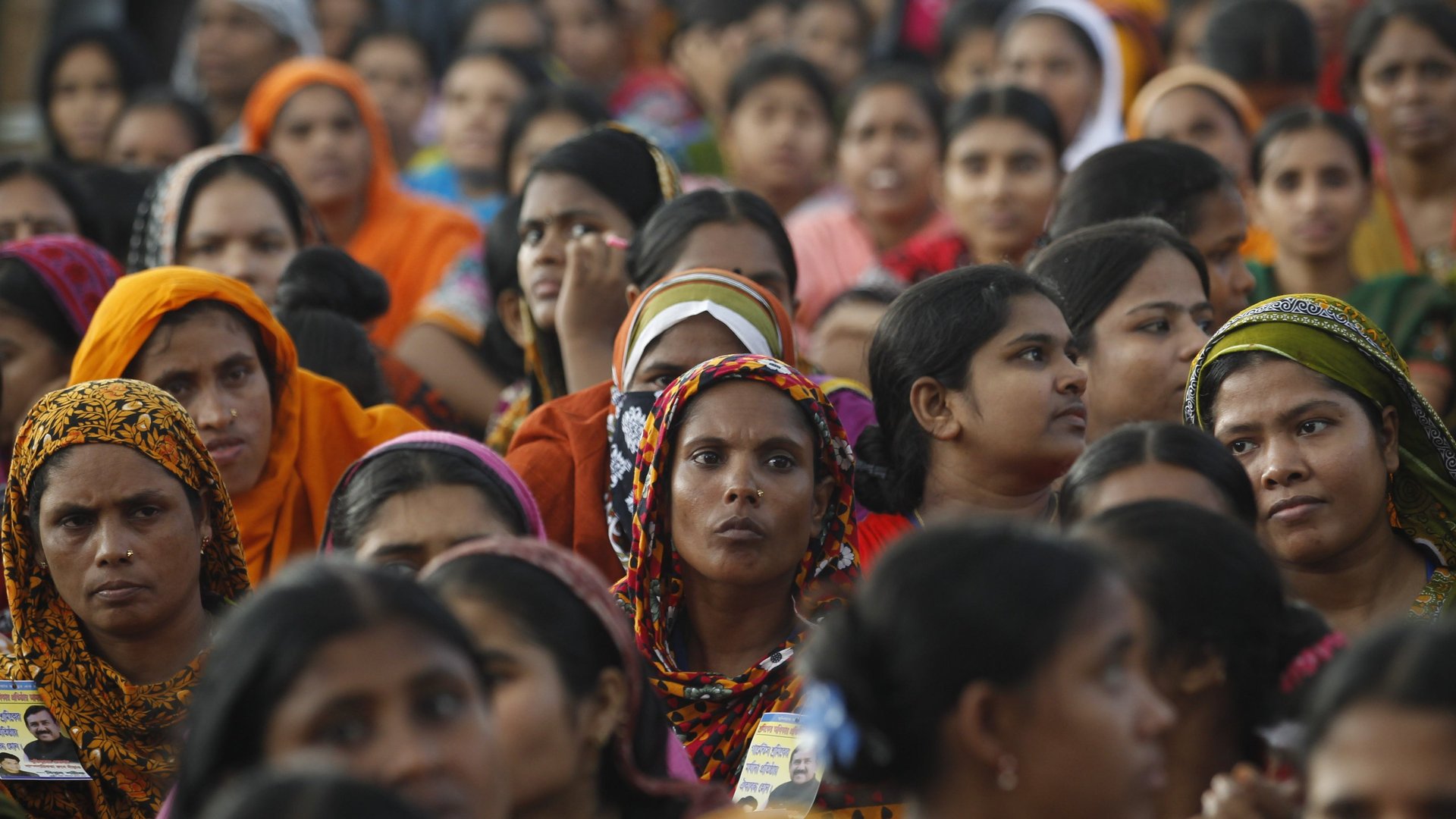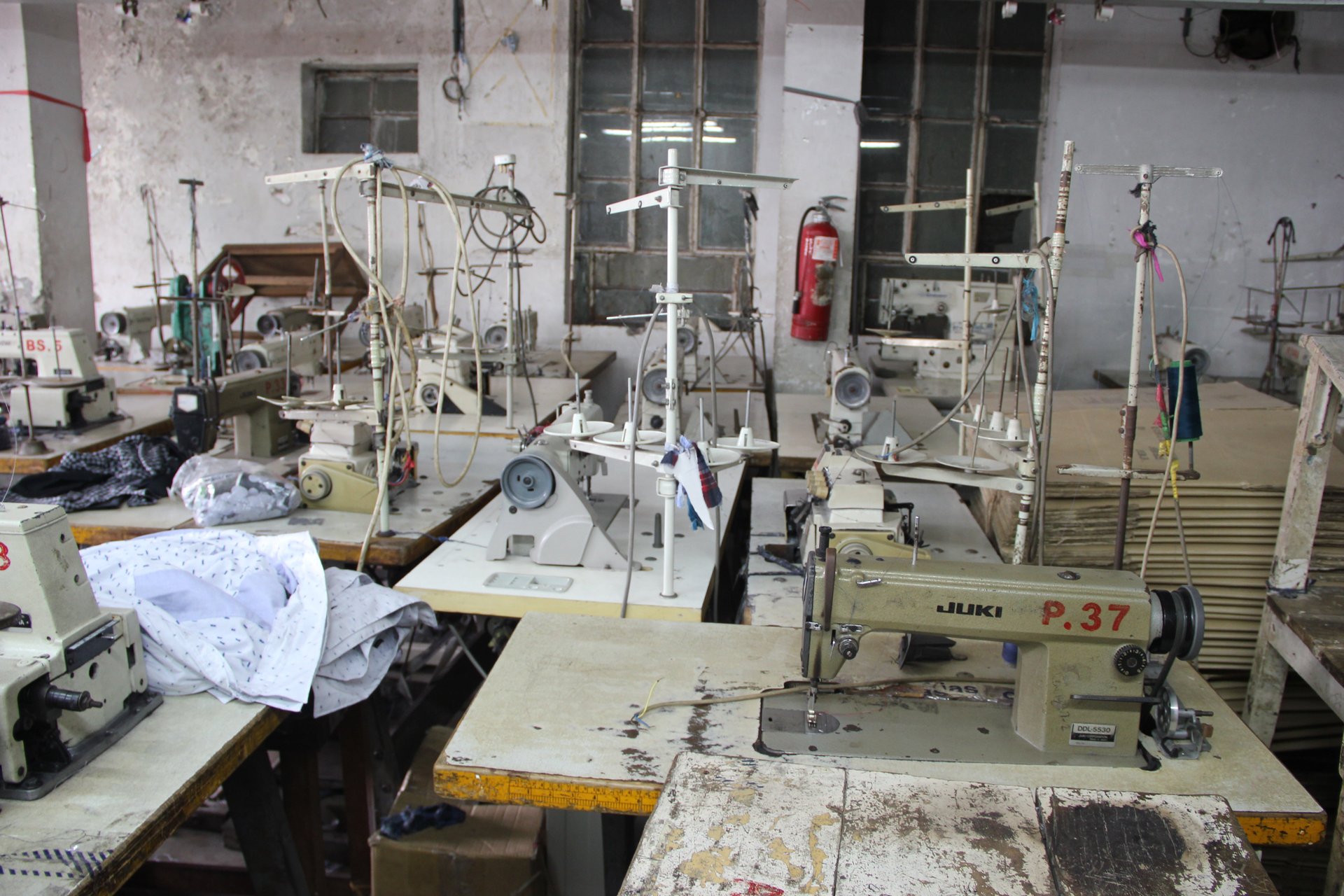The problem in Bangladesh’s garment industry is three times bigger than anyone suspected
This post has been updated.


This post has been updated.
Right now, there are two prominent coalitions working to improve factory safety in Bangladesh’s massive and notoriously unsafe garment industry. The progress made by these groups—the Bangladesh Accord for Fire and Building Safety and the Alliance for Bangladesh Worker Safety—has been painfully slow since they formed in the wake of the 2013 Rana Plaza factory collapse.
But even if they were remaking the industry at record pace, there’s another problem: Together they’re only looking at 27% of Bangladesh’s factories, according to a year-long study by NYU’s Stern Center for Business and Human Rights.
The Center has slowly and painstakingly poured over official records and followed leads on the ground to quite literally map Bangladesh’s garment industry. What it found is that, while previous estimates put the number of garment factories between 3,500 and 4,500—of which about 1,900 fall under the oversight of the Accord and Alliance—the actual number of factories reaches above 7,000.
To be precise, the team documented 7,179 factories, and those previously uncounted factories are largely informal and unregulated, meaning they’re the ones that tend to be the most dangerous. Often, they’re set up as subcontractors—a brand will place an order with a direct supplier, and for various reasons the supplier may subcontract the work to another factory, an indirect subcontractor.

“The result is that millions of workers in subcontracting factories fall outside the protection of international safety-improvement initiatives, and are especially vulnerable in a country where unsafe working conditions are a chronic problem,” the Center said in a press release.
Many of these factories are producing clothes for international brands. Technically, only about 3,200 are listed as direct exporters, meaning they’re registered to directly supply international labels. Yet in a survey of 479 factories the team conducted in June, it found that 153 were acting as subcontractors “producing at least partly for the export market.” It’s routine for this kind of subcontracting to occur in brand supply chains.
Update, Dec. 28, 2:00pm EST: Since the Center released the report, the Bangladesh Garment Manufacturers and Exporters Association has contested the findings (paywall), saying the Center included small local producers that aren’t actually factories in its count and the correct number of factories is 3,500. It also said vigilance has increased so much that subcontracting has been greatly reduced. The Center challenged the BGMEA to prove it wrong by conducting its own studies and publishing better data.
Update, Feb. 12, 2016, 3:00pm EST: A report (pdf) released on Feb. 10, 2016, by Penn State University’s Center for Global Workers’ Rights has criticized the Center’s report. It says the Center made a number of mistakes in its research, and concluded that the Center significantly overstated the problem of informal factories. The Center issued a response on Feb. 12, disputing its claims.
Regardless of the type of factory, whether a direct exporter or subcontractor, the Center’s report found safety was still a major issue. It said that, all told, the Alliance, Accord, Bangladesh’s government, and the International Labour Organization have performed 3,425 inspections, but just eight factories have passed final inspection.
Meanwhile, more than $280 million have been pledged in total to helping remediate the country’s garment factories, leading the report’s authors, Sarah Labowitz and Dorothée Baumann-Pauly, to note that it isn’t clear “how many of these resources are being spent or if any of this money is being applied to remediate factories.”
Fixing these problems is an enormously complex undertaking, but it’s a necessary one. Bangladesh’s garment industry has helped millions to escape poverty, and it’s not for the best if brands pull out of the country. The best solution, Labowitz and Baumann-Pauly write, is “shared responsibility,” in which all parties acknowledge the scope of the problem, allow space for honest discussion, and act together to fix it.